Latin America
Related: About this forumWho Was Hipolito Mora, The Controversial Landowner Murdered In Mexico Who Founded The Self-Defense G
Who Was Hipolito Mora, The Controversial Landowner Murdered In Mexico Who Founded The Self-Defense Groups Against Drug Trafficking In Michoacan?By Char 6/30/2023 07:33:00 PM
"Char" for Borderland Beat
BBC News World
"I don't have much time left here... I won't make it to Christmas alive."
The words were uttered just a few weeks ago by Hipolito Mora, the controversial Mexican landowner who a decade ago promoted the creation of civilian self-defense groups to confront the drug traffickers who control the western part of the country.
His prediction came true on Thursday, June 29, when he was ambushed by several armed men while driving in his armored van.
Although authorities have only just begun investigations, local media have attributed the murder of Mora and three of his bodyguards to a criminal gang called Los Viagras.
The events occurred in the town of La Ruana, a small town in the Michoacan municipality of Buenaventura, where the landowner was born 68 years ago and where he lived most of his life.
More:
https://www.borderlandbeat.com/2023/06/who-was-hipolito-mora-controversial.html
Judi Lynn
(162,397 posts)One of the last leaders of Mexico’s anti-gang citizens’ movement has been buried alongside two of his faithful followers
ByMARK STEVENSON Associated Press
July 1, 2023, 4:54 PM

Pall bearers carry the casket that contain the remains of armed civilian defense leader Hipolito Mora during a funeral service for him and two of his bodyguards, in La Ruana, Mexico, Saturday, July 1, 2023. Mora, the leader of an armed civilian movement that once drove a drug cartel out of the western state of Michoacan, was killed on June 29th on a street in his hometown. (AP Photo/Eduardo Verdugo)
The Associated Press
LA RUANA, Mexico -- One of the last leaders of Mexico’s anti-gang citizens' movement was buried Saturday alongside two of his faithful followers, and any hope of reviving armed civilian resistance to drug cartels probably died with them.
“Self defense” vigilante leader Hipolito Mora had long since ceased to pose an armed threat to the cartel that dominates western Mexico's Michoacan state, as was clear from the overwhelming, deadly, multipoint ambush in which he and three followers were slain Thursday.
While some angry relatives talked of reviving the 2013-2014 armed farmers' movement that kicked out one cartel — only to see it replaced by others — many doubted that heroic, tragic chapter could ever be repeated.
“I think it’s not a question of reviving the past,” said the Rev. Gilberto Vergara, one of the priests who officiated the funeral Mass for Mora and his followers Calixto Alvarez and Roberto Naranjo. The third follower was buried elsewhere.
More:
https://abcnews.go.com/International/wireStory/mexican-anti-cartel-vigilante-leader-buried-armed-citizens-100583660


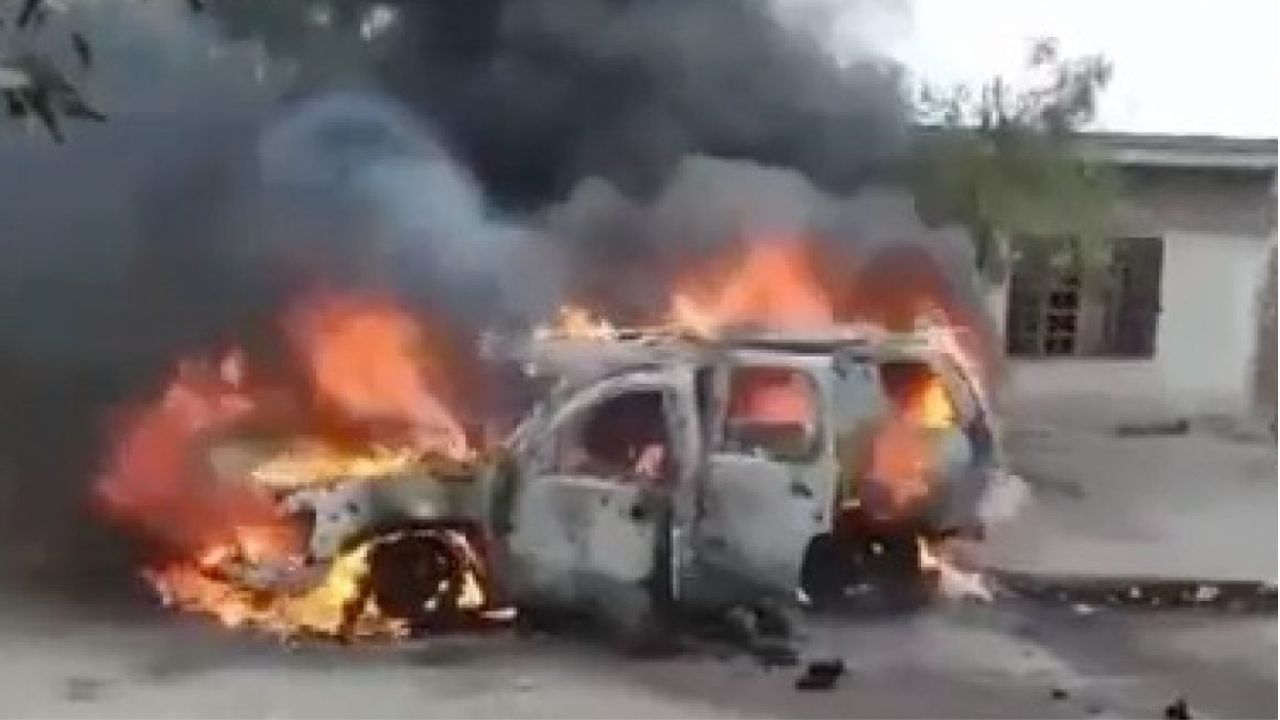

Judi Lynn
(162,397 posts)9 hours
Marcos Gonzalez Diaz
BBC News World correspondent in Mexico
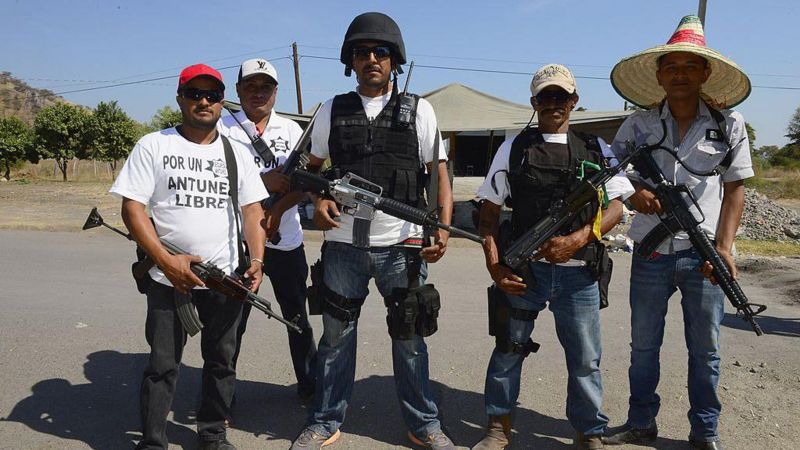
The founding of the first self-defense groups in February 2013 prompted these groups to replicate in various areas of the Mexican state of Michoacán.
The brutal murder this Thursday of Hipólito Mora, who was one of the founders of the self-defense groups of the Mexican state of Michoacán a decade ago, once again drew attention to these civil groups that were born to confront organized crime.
Originally made up of citizens who took up arms fed up with the inaction of the authorities in the face of the tentacles of the cartels in western Mexico, the image of these groups ended up tarnished after verifying how many of them were infiltrated by criminals who said they wanted to fight and even ended up becoming criminal organizations that continue to operate today.
After years of publicly denouncing criminal activities in La Ruana, his small hometown where he continued to live despite having received multiple threats and attacks, this Thursday a group of men shot and set fire to the armored truck in which he was traveling. Three of his escorts were also killed.
“I said it: I am going to die fighting. I just want my death not to be in vain. That we Michoacáns, that we all boast bravery, be brave once and for all and put an end to this evil that the ground has for us, ”she wrote in a posthumous letter released this Friday.
The Mexican president, Andrés Manuel López Obrador, regretted the murder hours before but ruled out that the authorities had left Mora alone, as many claim. “The state government gave him protection, however, it was not possible to prevent him from being murdered,” he declared.
The governor of Michoacán, Alfredo Ramírez Bedolla, who assured that Mora had been asked to stay in the capital Morelia so as not to risk threats, criticized the role of groups led by Mora in the past, which he described as " the illegal armed self-defense movement that did not bring anything positive to the State, on the contrary”, which once again recalled the lights and shadows that surrounded them in the last decade.
Against the Knights Templar
In 2013, the Knights Templar—a group that broke away from the Familia Michoacana cartel—was the dominant criminal organization in the state of Michoacán, a strategic location for drug production and trafficking.
The population was fed up with being subjected to extortion and threats. On February 24 of that year, a group of residents of La Ruana, in the municipality of Buenavista, decided to organize and strip the municipal police of weapons and patrols in order to confront the criminals themselves.
That rebellion, considered the beginning of the Michoacán self-defense groups, was led by Mora, a lemon farmer. The process took place almost at the same time as in the neighboring municipality of Tepalcatepec, headed there by Dr. José Manuel Mireles.
“We asked many times for them to come help us, and no. That is what motivates you to want to fight,” Ana Valencia, a former Tepalcatepec self-defense group, told the Milenio channel on the occasion of the tenth anniversary of its foundation last March.
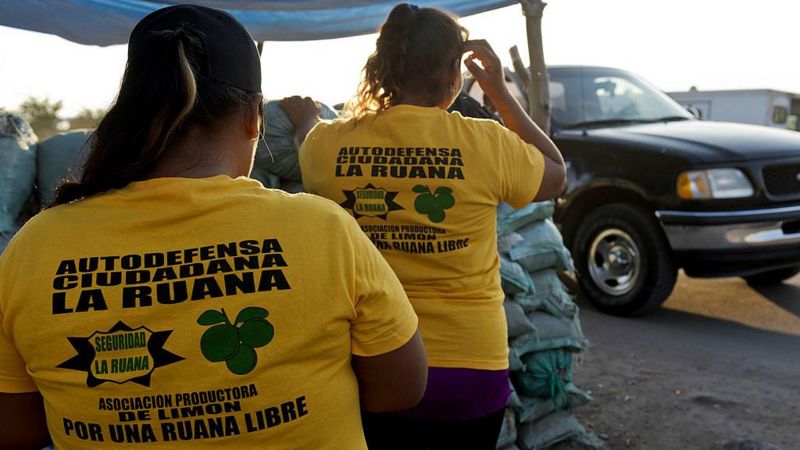
AFP
Caption,
La Ruana was one of the communities in Michoacán where the self-defense groups were born.
The self-defense groups soon won the approval of a large part of public opinion, which thought that these citizens were giving the answer that the authorities could not —or did not want to— give in the face of the constant threat of organized crime.
Those residents, mainly farmers and ranchers, faced drug traffickers loaded with weapons that, in many cases, they had never used before. According to various sources, their weapons came from the area's municipal police themselves —stolen or voluntarily donated—, or were bought on the illegal market thanks to donations from Michoacán living in the United States.
The repercussion of these first self-defense groups was almost immediate. In a matter of six months, there were already 75 self-defense groups that emerged in this region of Michoacán. Similar groups were also born in other Mexican states, especially in neighboring Guerrero, although their creation and context were different.
The institutionalization of the self-defense groups
The situation in Michoacán soon began to draw the attention of the international press, which caused the Mexican government —presided at the time by Enrique Peña Nieto— to apply double pressure.
“The authorities were confronting groups that, regardless of their objective, were acting outside the law, since no Mexican citizen has the right to buy certain types of weapons or organize themselves for security tasks like these. Its existence implied the commission of certain types of crimes”, emphasizes the specialist in security and organized crime, Víctor Sánchez Valdés.
"And, on the other, the government faced pressure that the existence of these groups made clear its inability to solve the problem of insecurity in Michoacán," he says in an interview with BBC Mundo.
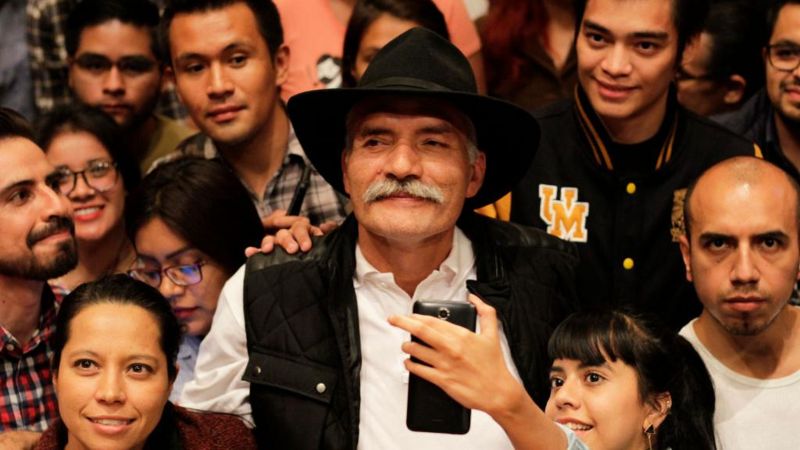
GETTY IMAGES
Caption,
José Manuel Mireles, leader of the self-defense groups in Tepalcatepec, died in 2020 a victim of covid-19.
Its rapid expansion generated a great alert in the authorities, who then decided to also focus their efforts on ending the enemy indicated by the inhabitants: The Knights Templar. In less than a year, the organization had practically disappeared from Michoacán.
Aware of the sympathy that the self-defense groups already aroused at that time, the government softened its position towards them and opted in some way to institutionalize them or make them legal.
To this end, Alfredo Castillo was appointed Commissioner for Security in Michoacán and in 2014 the members of these groups were invited to join the State Rural Force, a police force created to strengthen the fight against crime in the entity.
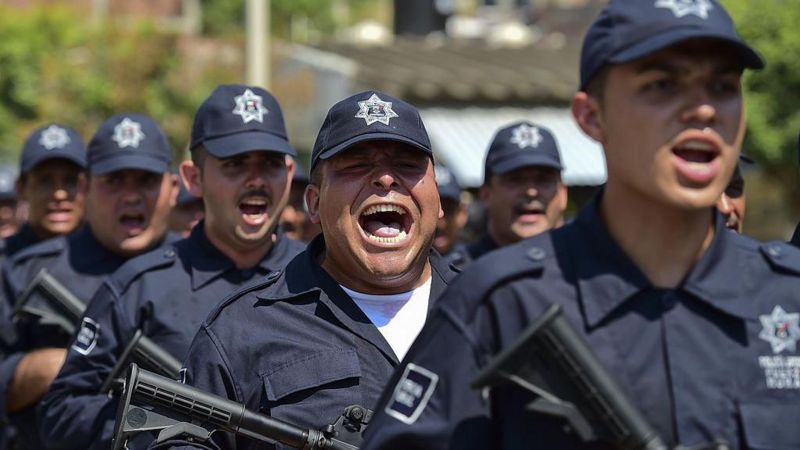
Members of the self-defense groups joined the body known as the Michoacán Rural Force.
That transformation was supposedly accompanied by a disarmament of the self-defense groups, although many acknowledged having kept their most powerful weapons.
"Probably many of these people would not go through a rigorous control of confidence, a training... The truth is that this process of enlisting in the Rural Force was rather mediatic," questions Sánchez.
The role of the CJNG
It was shortly thereafter that the first serious allegations that many of these groups had ties to organized crime began to emerge.
Behind these links was none other than the Jalisco Nueva Generación cartel (CJNG), the main rival group of the Knights Templar, which the self-defense groups had managed to make disappear.
“Today there is enough evidence to know that an important part of these groups were really created by the CJNG, which financed them and gave them weapons to face their rivals,” says Sánchez, a researcher at the Autonomous University of Coahuila.
“To achieve this, he dressed up some of his little-known regional operators as vigilantes and passed them off as ordinary citizens. It was really impossible to distinguish between one and the other, between the group that was legitimately made up of citizens and the one that was not”, he adds.
Beltran y Castillo

AFP
Caption,
Estanislao Beltrán, alias "Papá Smurf", was another of the well-known founders of the self-defense groups who joined the State Rural Force. In the image, he receives his weapon from Alfredo Castillo.
Among others, the expert cites as examples former self-defense groups such as Juan José Farías (alias "El Abuelo"
What was seen later was how these groups attacked the few self-defense groups that were legitimately formed and outside of organized crime. The son of Hipólito Mora, for example, died in an armed confrontation with "el Americano" at the end of 2014.
Those criminals disguised as self-defense groups gained presence and power, which led them to break with the CJNG that had initially promoted them to then try to strengthen their own regional organization.
The actual situation
The perception of citizens towards the self-defense groups logically began to change. The government ended the Rural Force barely two years after its creation, aware that it was uniforming and arming a large number of drug traffickers.
"What is important to highlight is that the self-defense groups linked to Mora and Dr. Mireles have not yet been proven to have certain links with another criminal organization and they always had the citizen component with which they were born," Sánchez emphasizes.
“I never accepted bribes or intimidation; I fought without receiving anything in return, more than the affection of the people. Those who didn't love me were the bad guys," Mora stressed in his posthumous letter released this Friday.
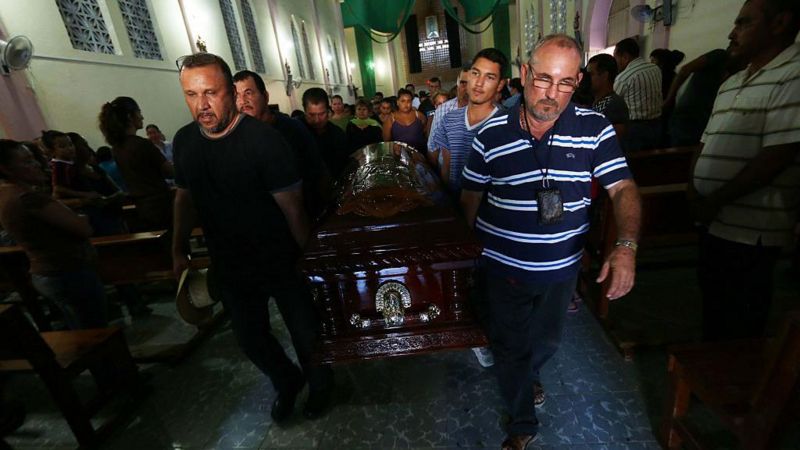
AFP
Caption,
Hipólito Mora (right) buried his son in 2014, who died in a confrontation with the group led by "Simón el Americano".
But today, the situation of violence in Michoacán is not much better. Organizations such as the CJNG, Los Viagras or La Nueva Familia Michoacana continue to dispute control of this area. The presence of self-defense groups is now almost anecdotal in small communities like La Ruana, where Mora was assassinated.
A report published in March by The Global Initiative ten years after the emergence of the self-defense groups says that the entity continues to be one of the most violent in the country, which demonstrates how public security cannot be left in private hands and informal agreements between authorities and local leaders can have serious consequences and foster instability.
“The goal of the self-defense groups was laudable in principle, but without a doubt the criminal groups used their idea to benefit from the scheme. And yes, they ended up with a common enemy such as The Knights Templar, but they ended up replacing them with other executioners who never brought calm to the State”, concludes Sánchez.
https://www.bbc.com/mundo/articles/cqvq6pnx8y6o